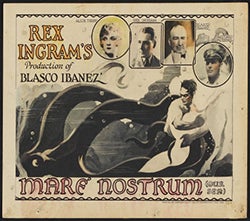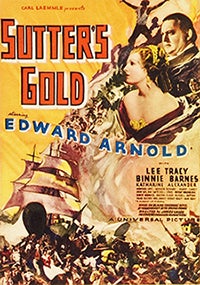Labor Day weekend for many of us means only one thing: CINECON, the annual convention of film collectors, film buffs, film historians and archivists. The proceedings begin on Thursday and end on Monday with regulars flying in from all over the country. In the old days, Cinecon travelled from city to city, hosted by local cinephiles, but the convention moved permanently to Los Angeles in the early 1990s.
These days, screenings take place at the Egyptian Theatre in Hollywood, literally from morning till late night; while collectors of film memorabilia frequent the Loews Hollywood Hotel, where in designated rooms dealer’s set up long tables of posters, photographs, films and dvds that invite endless browsing; while authors of new publications on Hollywood discuss their work behind tables of books. Then, there are the special event screenings with aging film stars and the banquet with more of the same.
"There is an element of the chase in this pleasure."
I think I attended my first Cinecon as a guest and presenter from George Eastman House in the early 1990s, a year when the weekend was staged at the Roosevelt Hotel, including all the screenings. Projected in the very same room where the Academy of Motion Picture Arts and Sciences held the first Oscar ceremony. The weekend was memorable, because my wife and I enjoyed a poolside suite courtesy of Cinecon, something no one would be able to afford these days now that Hollywood Blvd. has attempted to go upscale. After moving to Los Angeles in 1998, I became a volunteer for the festival, since the whole weekend is indeed organized by volunteers who put in countless hours. Many of them come from out-of-state, as do many of the regular attendees, all dedicated to viewing old movies, ever hopeful of finding a great unknown masterpiece of cinema. There is an element of the chase in this pleasure.
 Cinecon features classic films, in other words, until recently, they did not show anything made after 1950. They’ve had to modify that regalement though, in order to find living stars. This year’s big event film was April Love (1957) with Pat Boone and Shirley Jones, both in attendance, an event I was unable to attend. I did get to see twenty-two shorts and features, however, mostly in black and white, silents accompanied with live piano and musical extravaganzas with an abundance of sound.
Cinecon features classic films, in other words, until recently, they did not show anything made after 1950. They’ve had to modify that regalement though, in order to find living stars. This year’s big event film was April Love (1957) with Pat Boone and Shirley Jones, both in attendance, an event I was unable to attend. I did get to see twenty-two shorts and features, however, mostly in black and white, silents accompanied with live piano and musical extravaganzas with an abundance of sound.
My biggest discovery at Cinecon was Mitchell Leisen's post-World War II screwball comedy, Suddenly It’s Spring (1947) with Paulette Goddard and Fred MacMurray. It’s a comedy of remarriage, as Stanley Cavell defined them for the late 1930s, transposed to the post-war era, when such comedies were few and far between. Here the stars portray a couple separated by the war who file for divorce, although…Thus replicating an experience millions of married couples, whose husbands had gone off to fight in the war, and now needed reestablish their marriages. With a literate script, this film is as light as the Lubitsch touch.

I also discovered Ramrod (1947), directed by André de Toth and starring Joel McCrea and Veronica Lake. This is a UCLA Film & Television Archive preservation that I had not yet seen. I had lunch a couple of times with Hungarian born de Toth at his favorite restaurant, an old school place right across from the Warner Brothers lot, but never discussed Ramrod. It is a true film noir western, much of the action subject to the light and shadows of nighttime action, and at its center is Veronica Lake as a spider woman in jeans, leading on an essentially weak and clueless hero.

I was also intrigued by Rex Ingram’s nearly epic tale, Mare Nostrum (1926), the first film he produced in his newly constructed studios in Nice, France. Starring Alice Terry, Ingram’s wife (just as Lake was de Toth’s wife), and Antonio Moreno, Mare Nostrum is based on a Vicente Blasco Ibáñez novel about the downfall of a Spanish seafaring family, the hero’s name, Ulysses, clearly metaphoric. Alice Terry plays a German spy, but Ingram was a Hollywood pictorialist of the first order – like Maurice Tourneur, whose The Pride of the Clan (1917) was also shown at Cinecon and is my favorite Mary Pickford film – so plot was only a means to the end of creating beautiful images, of which there are indeed many.
Unfortunately, I was disappointed in Universal’s Sutter’s Gold (1936, James Cruze), which I had been chasing after for more than thirty years. Back in the 1980s, I wrote a piece on Luis Trenker’s simultaneously realized German version of the Sutter story, Der Kaiser von Kalifornien (1936), calling it the “first Nazi Western.” But I had to admit that Trenker’s film was aesthetically far superior to the Hollywood version, despite its politics, because it did not try to visualize every moment of Sutter’s actual journey, as Cruze and his writers had.
Not every film is a masterpiece at Cinecon, but then you never know when you will be surprised.






 Mobile Navigation
Mobile Navigation

